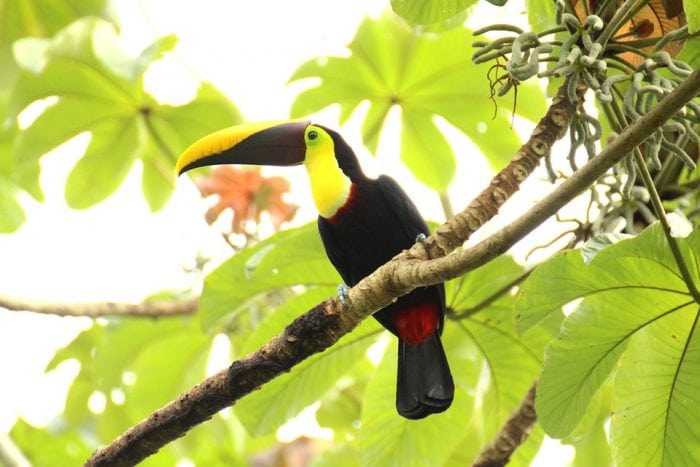
Costa Rica has aggressively pursued the development of cleaner forms of power over the past decade, and the country has just hit a new milestone. Costa Rica has managed to only generate power from renewable resources for a full 300 days. This sets a new record for the country, following last year’s feat where it managed 250 days of completely renewable power generation.
Investing Completely in Renewable Energy
Costa Rica is a small country, home to only 5 million people. Yet despite this, the country has managed to produce energy from almost nothing but green energy sources. Recent figures released by Costa Rica’s National Centre for Energy Control state that 99.2 percent of the energy the country generates comes from alternative energy sources.
The news has cemented Costa Rica’s reputation as a leader in the pursuit of renewable energy technology. Most of Costa Rica’s energy, 78.26% of it, comes from hydropower sources. Costa Rica’s hydroelectric dams output around 2.12 GW. Wind energy and geothermal energy combined makeup about 20% of Costa Rica’s energy generation, followed by biomass and solar, which make up about 1%. Hydrocarbons make up less than 1% of energy generation in the country.
If renewable energy is unavailable the country’s power grid relies on a system of thermal backups, yet the country has not had to rely on their grid backup since May 1st of this year.
This is in contrast to the United States which currently only meets about 15% of its energy needs from renewable resources. The United States still relies primarily on fossil fuels, with coal and natural gas making up most of the energy market. Nuclear power provides about one-fifth of the country’s energy.
An Energy Paradox
However, for all its considerable advances in utilizing alternative energy sources, Costa Rica’s use of oil is actually increasing. This is because while Costa Rica powers many of its homes and businesses with renewables, the country’s transportation sector is still mainly powered by gasoline. The transportation sector in Costa Rica eats up so much energy that the energy generated by renewable resources accounts for only about a quarter of the country’s energy needs.

Electric vehicles like this are a rare but growing sight in Costa Rica. Photo: Mike/pexels.com, CC0
Even though Costa Rica has been investing in alternative fuel vehicles, electric cars and hybrid cars only make up about 2% of all vehicles in the country. Costa Rica has more cars than most countries in Latin America, about 287 cars for every 1,000 people, and as a result gas purchases actually increased by 11% last year. Demand for vehicles in the country is likely to increase, and substantial investments into public transit systems and alternative fuel vehicles will be needed if Costa Rica is to avoid the worst air pollution and traffic problems that plague many other personal vehicle-heavy countries.
Demand is also likely to increase for electricity in general, as the country’s economy grows. It is likely that new renewable energy infrastructure can keep up with the increasing demand, however. Costa Rica is continuing to construct new renewable energy infrastructure all the time.
“For 2017, we expect renewable electricity generation to remain stable,” said the executive president of Instituto Costarricense de Electricidad (ICE), Carlos Manuel Obregón. “We have four new wind plants and expect favorable rain conditions in the basins that feed our plants.”
The country’s newest hydroelectric dam on the Caribbean coast became fully operational in September of last year, and the country is planning even more hydropower projects.
Ecosystem Conservation
Conservation groups in Costa Rica have a complex relationship with the new dam projects. On the one hand, pursuing more eco-friendly ways to meet the power needs of the country is always a welcome investment. On the other hand, conservationists are worried that the construction of more dams will block critical wildlife corridors.
Costa Rica is home to an astonishingly diverse and fragile ecosystem. It is one of the most ecologically diverse areas of the planet, for while Costa Rica represents only 0.03 percent of the Earth’s surface it hosts about 6% of the world’s biodiversity. Over 500,000 different species are known to exist in the country, including over 175 different amphibian species, 894 different species of birds, and 250 different species of mammals. Finding a way to continue growth in harmony with the ecosystem has been one of the country’s greatest challenges.

This toucan is part of Costa Rica’s diverse ecosystem. Photo: pexels.com, CC0
Despite the challenges, government members and environmental activists remain committed and inspired to choose the expansion of renewable energy infrastructure over fossil fuels. Renewable energy advocacy group Costa Rica Limpia has characterized the idea that a country must choose between growth and environmental protection as a myth.
“It really is time to debunk the myth that a country has to choose between development on the one hand and environmental protection, renewables, quality of life, on the other,” said Costa Rica Limpia’s founder, Monica Araya, during a TED talk in 2016.
Aiming For 100% Renewable Energy
Others have pointed out that Costa Rica benefits from being a rather small country, whose geographical location provides plenty of rainfall and other opportunities to invest in renewable energy that other countries don’t have. However, Araya says that it isn’t merely luck that turned Costa Rica into a renewable energy leader.
“It is not just good luck. It is also an ability to think in the long term,” said Araya. “The story could have been different. It could have been the story of any developing country that goes for the short-term option. I think the underpinning rationale that shaped some of the decisions that now have paid off – for example, non-fossil fuel electricity generation, the creation of national parks – was the ability to think in the long term.”
Even though Costa Rica benefits from unique geographical opportunities, its recent milestones are symbolic of new trends in sustainable development. The country could also serve as an inspiration to other nations, as even some of the wealthiest and most powerful nations on the globe are falling behind the trends set by Costa Rica and other renewable energy leaders.
Whatever Costa Rica’s role in the renewable energy renaissance, what cannot be denied is that the near future will see many more countries and cities investing in renewable resources. Cities across the US have made the pledge to pursue 100% of their energy generation from renewable resources, and over 50 different countries have agreed to do the same by 2050.









